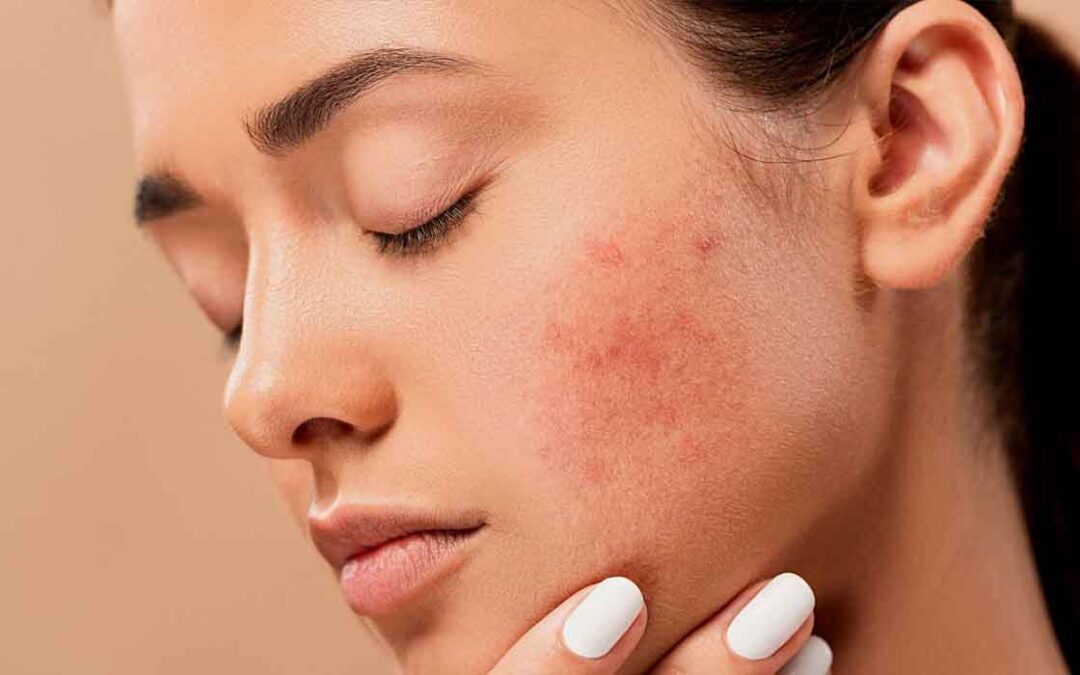Discoloration refers to the changes in the tone or the visible appearance of any matter or substance. This is mostly caused by the inner reactions among the components of that matter or substance. Furthermore, human beings also experience skin discoloration, which can happen due to many reasons. These skin discoloration causes include sickness, injuries, inflammation, and fluctuations in the melanin levels. Melanin is a pigment that provides the color to the skin, while also protecting it from the UV rays of the Sun. Thus, a fluctuation in the melanin levels can often result in the surfacing of discolored skin patches. Here we will check out everything about discoloration, its causes, types, and treatment.
WHAT IS SKIN DISCOLORATION?

Skin discoloration is a condition in which there are changes in the color of skin in some uneven areas. This can often be a frustrating and uncomfortable situation for anyone as these discolored patches can appear anywhere. For example, some people might experience these on their faces and others might experience these on arms, back, and chest, etc. Various factors might cause this common problem. One of the most common causes is the overproduction of melanin pigment, which causes dark-colored skin patches. Now know more about the various causes of skin discoloration in detail.
SKIN DISCOLORATION CAUSES & TYPES

There is a long list of causes that might lead to the formation of discolored skin patches on the body. Here are some of the most common types of skin discoloration, along with their causes.
- Radiation Therapy – This type of skin discoloration mainly occurs to the person undergoing radiation therapy treatment. Along with the discolored patches, a person might experience blisters, dry skin, itching, and skin peel-offs. Also, a person undergoing radiation therapy might experience hair loss in the body area being treated.
- Sunburns – Sunburn is often caused by over-exposure to the harmful UV rays of the sun. The appearance of sunburn is red skin with a possibility of inflammation and pain. Also, there is dryness and skin peel-offs. The situation can become worse if exposed more in the sunlight.
- Candida – This type of skin discoloration is common in folding body areas like armpits, butt, underneath breasts, and in-between fingers/toes. A person might experience itching, throbbing, and smoldering red rashes that appear wet in the center, and dry around the edges. If left untreated, it can become worse to painful skin cracks with blisters and possible bacterial infection.
- Rosacea – This is a chronic disorder, which might keep fading away and appearing back. The reappearance might be caused due to various factors like spicy eatables, alcoholic drinks, sunlight, anxiety, and certain bacteria in the intestines. Some of the common symptoms of this disorder include facial reddening, inflammation, reddish bumps, dry skin, and sensitive skin.
- Burns – Burns are known to be emergencies, for which immediate medical assistance is highly recommended. These are divided into three categories according to their severity and indicators i.e. First Degree, Second Degree, and Third Degree.
- Tinea Versicolor – In this condition, a person might experience the appearance of whitish, tanned, brownish, pinkish, or reddish spots on the skin. The appearance of these spots might be light or dark than your original skin tone. A person might notice dryness, itchiness, and flakes in the affected skin area. These spots might fade away in the cold season, and resurface in the summers & spring season.
- Contact Dermatitis – Often caused by the allergens, a rash with noticeable edges might appear on the affected skin area. A person might experience itchiness, redness, rawness, and flaking in the affected area. Also, oozy or crusty blisters might get formed on the skin.
- Strawberry Nevus – These are red or purple colored bumpy marks on the face, head, back, or chest. Mostly, these are either birthmarks or might develop during young age. As a child grows, these become smaller and fade away in the end.
- Eczema – Eczema is a common problem in which yellowish or whitish crusty patches are formed on the skin that flake-off. Many people also mostly experience dry flaky skin on the face due to eczema. A person might also notice redness, itchiness, and oiliness in the affected skin areas. Also, the hair might start falling out from the affected skin area.
- Bleeding Into The Skin – This is another critical situation in which getting immediate medical attention is highly advised. In this condition, a blood vessel might start leaking or rupture under the skin itself. Thus, a person might see some small reddish dots or purplish big patch under the skin. The causes of this condition can be an injury or some underlying illness.
- Vitiligo – In this condition, the skin color giving cells are destroyed due to autoimmune body responses. This condition can happen in two pattern types, namely Focal and Segmental. In the former, a few small patches appear that might combine later on. In the latter, one half of the body might become discolored. Also, a person might experience premature hair graying on the head and face.
- Stasis Ulcer – Stasis ulcer is the advanced stage of stasis dermatitis. The main cause of this problem is the lack of blood flow. Thus, it mainly happens in body areas like feet and lower legs. A person might experience the formation of sore, unevenly-shaped, and skin-deep seeping wounds crusts.
- Basal Cell Carcinoma – In this condition, scar-like areas that are bumpy, hard, and pale might appear on the affected skin area. However, the affected areas might also look like a dome, which is shiny, pinkish, or reddish in appearance. The skin might also easily bleed out, with no healing or recurring reappearance after healing.
- Actinic Keratosis – These are bulky, flaky, or crusty skin patches that are pinkish and not more than 2cms in size. This condition mainly affects the body areas exposed too much to the sun i.e. hands, face, head, arms, and neck.
- Squamous Cell Carcinoma – This condition mainly affects the body areas exposed too much to the UV rays of the sun. A person might notice flaky and reddened skin patches with bumps that keep on growing. Other symptoms include easy bleeding with no healing or recurring reappearance after healing.
- Melanoma – This is one of the gravest skin cancers, most commonly found in people with fair skin. In this condition, a person might notice irregularly-shaped moles with a variety of colors. If any mole is growing big or changing colors, it can be due to this condition.
- Melasma – This dark discoloration problem is commonly experienced by people. In this, a person might notice skin discoloration on the face and skin discoloration on the neck. In rare cases, dark spots might appear on other body parts too. Most commonly, this condition affects people with dark skin and too much sun exposure or women during pregnancy. Furthermore, these spots can be temporary or permanent.
- Mongolian Blue Spots – This is a harmless birthmark skin condition found commonly in Asia, which usually fades away with time. In this condition, big blackish or bluish patches appear on the back or buttocks.
SKIN DISCOLORATION DIAGNOSIS
Skin discoloration can be frustrating, embarrassing, and frightening for anyone. But what helps with skin discoloration is getting proper treatment from a professional doctor. For this, the discolored skin patches need to be checked to determine their types and causes first. However, firstly you must know in which situations you need to get in touch with a doctor. To help you better, some of these situations are mentioned below.
- You’ve noticed permanent skin color changes.
- A fresh mole or any other development on your skin if forming.
- The size or color of an already present mole has changed recently.
Now the doctor will perform some tests to check and determine the type and cause of discolored skin patches. Also, the doctor might ask some very essential questions like when the discoloration started, its speed, and other symptoms, etc. You need to tell everything about any skin problems you’ve experienced in your whole life. Also, your current state of health and medications you take need to be discussed upfront with the doctor. Other skin discoloration diagnosis tests include:
- Blood Tests
- Wood’s Lamp Examination
- Skin Biopsy
SKIN DISCOLORATION TREATMENT
People often ask about the treatment options for skin discoloration, especially what helps with discoloration on the face. But you need to understand that without knowing the type of skin discoloration and its cause, it’s impossible to treat it. Thus, by determining the cause and the type, the skin discoloration can be treated. However, the doctor might recommend one or a combination of different treatments depending upon your problem.
To provide you with a better idea, here are the most common treatment options available for treating discolored skin.
- Laser Therapies – Various laser therapies like Intense Pulsed Light Devices and Q-Switched Lasers are very effective in lightening dark skin patches.
- Topical Ointments – Prescribed topical ointments like Hydroquinone and Retinol help fade the discolored skin patches away.
- Chemical Peels – Chemical peels with Salicylic Acid and Glycolic Acid are useful in removing the outer skin layer which is discolored.
HOME REMEDIES FOR SKIN DISCOLORATION
Here are some of the most effective home remedies for skin discoloration.
- OTC ointments like Vitamin A cream and Vitamin E cream can help in treating discolored and dry flaky skin on the face.
- Lemon Juice is an excellent remedy to lighten dark discolored skin patches.
- Castor Oil application helps in making dry flaky skin into a smoother one by regulating melanin levels.
- Vitamin C rich foods are very helpful for keeping the skin healthy, along with the prevention and treatment of the discoloration.
- Burdock, Red Clover, and Milk Thistle Tea are also known to help in treating discolored skin.
The Takeaway!
So this was everything you need to know about skin discoloration causes and what helps with skin discoloration. This problem can happen to anyone and can be dangerous in many situations. Thus, you need to notice all the changes in your skin color, moles, and other aspects, and get immediate medical checkup done.



